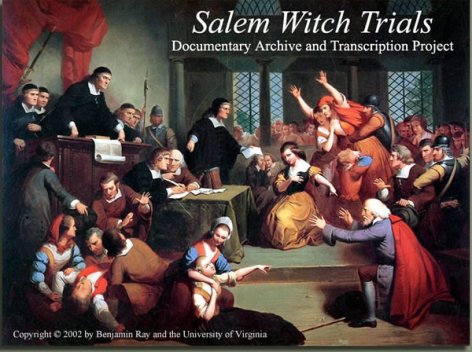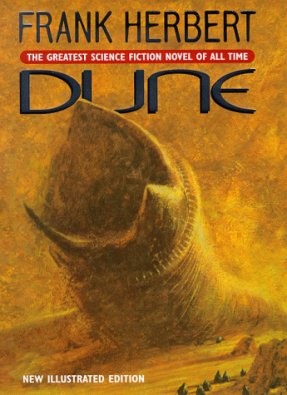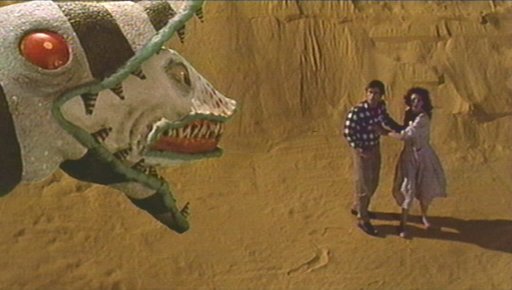
![]() Castlevania
Enemy Origins
Castlevania
Enemy Origins ![]()
| Enemy Name: | Mina Hakuba (whose form is used as enemies as a guise) |
| Games In: | Castlevania: Aria of Sorrow and Castlevania: Dawn of Sorrow |
| Description: | "Mina (Murray) is Jonathan Harker's betrothed in Bram Stoker's Dracula, the novel written, of course, by Bram Stoker. Mina is portrayed by Winona Ryder in Coppola's film Bram Stoker's Dracula, an adaptation. In Aria, the minor enemy succubus mimics Mina's appearance in order to fool hero Soma Cruz." |
| Picture(s): |
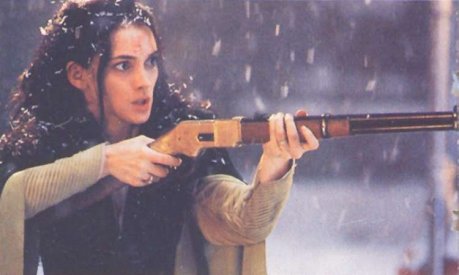 |
| References: | myweb.tiscali.co.uk/pigasuspress/photos/winono4.jpg |
![]()
![]()
| Enemy Name: | Minotaur |
| Games In: | Dracula X: Rondo of Blood, Castlevania Bloodlines, Castlevania: Dracula X, Castlevania: Symphony of the Night, Castlevania: Circle of the Moon, Castlevania: Harmony of Dissonance, Castlevania: Aria of Sorrow, Castlevania: Curse of Darkness and Castlevania: Portrait of Ruin |
| Description: | "A minotaur is a monster that's half-human and half-bull. The minotaur race was born of Pasiphae, the wife of Minos (the king of Crete), after she refused to sacrifice to Poseidon a white bull that was sent to her by the god. The minotaur was placed in a labyrinth where it would feed upon humans offered in sacrifice--this until it was slain by Thesee." |
| Picture(s): |
 |
| References: | www.clr.utoronto.ca/PEOPLE/RUSS/MINOTAUR/Minotaur.jpg |
![]()
![]()
| Enemy Name: | Mothman |
| Games In: | Castlevania: Dawn of Sorrow and Castlevania: Order of Ecclesia |
| Description: | "Mothman is a term first used by newspapers to refer to a creature reportedly seen around Point Pleasant areas of West Virginia between 1966 and 1967." |
| Picture(s): |
 |
| References: | www.cosmicteaparty.org/Episode11.htm |
![]()
![]()
| Enemy Name: | Mummy |
| Games In: | Vampire Killer, Castlevania, Castlevania II: Simon's Quest, Castlevania III: Dracula's Curse, Super Castlevania IV, Dracula X: Rondo of Blood, Castlevania: Symphony of the Night, Castlevania: Circle of the Moon and Castlevania: Portrait of Ruin |
| Description: | "A embalmed corpse whose name is derived from the Persian 'mum' ('wak'). It was a way of preserving dead bodies and preventing decay; it was a process used all over the world, with the most famous mummies being either Egyptians and Mayan. People mummified were important those important, like kings, high religious figures, and so on. Though mummification can be done artificially, it can sometimes happen naturally--insects found in amber, for example (as seen below). 'The Mummy' was also the name of a horror/action movie in which an Egyptian priest is mummified alive and awakens centuries later to wreak havoc. One of the actors to have played this role was the legendary Christopher Lee." |
| Picture(s): |
 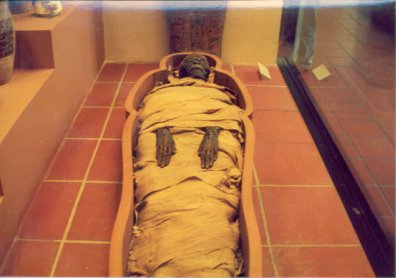 |
| References: | www.eskimo.com/~rwb/images/europe/07-vm-mummy.jpg www.museum-neuchatel.ch/collections/zoologie/insectes/insambre.htm |
![]()
![]()
| Enemy Name: | Mushussu |
| Games In: | Castlevania: Dawn of Sorrow |
| Description: | "In Babylonian mythology, mushussu was created by the dragon goddess Tiamat. After Tiamat's defeat, the mushussu was subdued by the hero Marduk and took place at his feet. Mushussu means 'furious snake.' It is associated with the constellation hydra (right picture). The first picture shows a reconstitution of the Ishtar gate of Babylon, which is shown in a museum in Berlin." |
| Picture(s): |
|
| References: | members.tripod.com/~Griffin109/west.html upload.wikimedia.org/wikipedia/fr/e/ee/Hydra_constellation_map.png |
![]()
![]()
| Enemy Name: | Naiad |
| Games In: | Castlevania: Lords of Shadow |
| Description: | "In Greek mythology, naiads are nymphs associated with fountains, wells, springs, rivers, and such. They are associated with freshwater." |
| Picture(s): |
 |
| References: | -images.artnet.com/WebServices/picture.aspx?date=20020326&catalog= 15738&gallery=110789&lot=00160&filetype=2 |
![]()
![]()
| Enemy Name: | Necromancer |
| Games In: | Castlevania: Circle of the Moon, Castlevania: Curse of Darkness, Castlevania: Order of Ecclesia and Castlevania: Lords of Shadow |
| Description: | "Necromancy is the divination of raising the spirits of the dead. The word is derived from the Greek necros 'dead' and manteia ('divination'). The necromancer is a practitioner of necromancy. In fantasy and horror-fiction, necromancers are considered evil, having sold their souls to demons or having been tainted through evil practices. In fiction, necromancers use their power to raise dead subjects that were often powerful creatures themselves." |
| Picture(s): |
 |
| References: | www.halloween-master.com/necro/necromancer.jpg |
![]()
![]()
| Enemy Name: | Needles |
| Games In: | Castlevania: Aria of Sorrow, Castlevania: Dawn of Sorrow and Castlevania: Order of Ecclesia |
| Description: | "Needles are probably mutated urchins. Urchins are sea creatures that belong to the Echinoidea class from the Echinodermata phylum. Spines are typically one-two centimeters long, though some can reach ten-twenty centimeters long. The shell, called 'test,' has a typical size of three-ten centimeters. Urchins can be found in oceans all over the world, from beaches to thousand-meter deeps. They feed mainly on algae. The first known echinoids were found in rocks toward the beginning of the Ordovician period; during this period, they probably lived probably in relatively quiet waters. In Aria, the needles can float; thus, its external appearance also reminds one of a mine (as seen below and to the left)." |
| Picture(s): |
  |
| References: | blogsimages.skynet.be/images/000/106/594_oursin.jpg en.wikipedia.org/wiki/Naval_mine |
![]()
![]()
| Enemy Name: | Nominon |
| Games In: | Castlevania: Order of Ecclesia |
| Description: | "The shape of this monster and its ability to suck life out of the player reminds me of the Illithids creatures from the Dungeons and Dragons series." |
| Picture(s): |
 |
| References: | www.elftown.com/_illithid |
![]()
![]()
| Enemy Name: | Nova Skeleton |
| Games In: | Castlevania: Symphony of the Night and Castlevania: Aria of Sorrow |
| Description: | "For the description and pictures related to this enemy, see the 'Nova Ring' in the Arsenal Origins feature.)" |
![]()
![]()
| Enemy Name: | Ogre |
| Games In: | Castlevania: Lords of Shadow |
| Description: | "An ogre (feminine ogress) is a large and cruel humanoid monster in mythology and fiction. It is often pictured with a strong body, a beard and a voracious appetite. The word ogre is of French origin and may refer to the inhabitants of Britain prior to human settlement in a pseudohistorical work. Some believe that the French myth of the ogre has been inspired by the real-life crimes of Gilles de Rais. (See also Gilles de Rais)." |
| Picture(s): |
 |
| References: | scriiipt.com/2010/08/votre-ami-denfance-logre/ |
![]()
![]()
| Enemy Name: | Olrox |
| Games In: | Castlevania: Symphony of the Night and Castlevania: Lords of Shadow |
| Description: | "Olrox is based on Count Graf Orlock, a fictional character from the silent film Nosferatu. The character, itself, based on Count Dracula, Orlock's propensities are quite the same: The unattractive (in comparison to Dracula) vampire menace poses as a nobleman while bringing fear, terror and death to Bremen, Germany; the unsavory fiend, said to sleep in soil infected with the 'Black Death,' brings with him the spread of disease and plague, heaping onto the population a sense of panic and hysteria." |
| Picture(s): |
 |
| References: | en.wikipedia.org/wiki/Count_Orlok |
![]()
![]()
| Enemy Name: | Orc, Rapid Sniper and Sniper Orc |
| Games In: | Castlevania: Curse of Darkness |
| Description: | "Orcs are evil beings found in Tolkien's literature. They are believed to be elves captured, then tortured, and finally corrupted by Melkor. They are squat, swarthy creatures that prefer the darkness. (For further information, you can read the Silmarillion and the Lord of the Rings.)" |
| Picture(s): |
 |
| References: | www.hollywoodjesus.com/movie/lotr_two_towers/12.jpg |
![]()
![]()
| Enemy Name: | Orobourous |
| Games In: | Castlevania: Symphony of the Night |
| Description: | "The orobourous is a serpent that eats its own tail. Its existence dates back almost 1600 years B.C. Really, it's a symbol of the cyclic nature of the Universe: Creation out of destruction; it is also an emblem of immortality. (See also Death Dragon.)" |
| Picture(s): |
 |
| References: | dragons.monstrous.com/Pictures/Dragon_Type_12.jpg |
![]()
![]()
| Enemy Name: | Owl |
| Games In: | Castlevania III: Dracula's Curse, Castlevania: Symphony of the Night, Castlevania: Harmony of Dissonance and Castlevania: Order of Ecclesia |
| Description: | "Owls are nocturnal birds of prey from the order Strigiformes. This order is divided into two families: Tytonidae and Strigidae. Owls feed on small mammals, insects, other birds, and sometimes fish. They can be found anywhere on Earth except for Antarctica, most of Greenland, and some remote islands. Owls are traditionally associated with wisdom and the Greek goddess Athena; in Romanian culture, they were considered a bad omen. In Greece, 'owl translates to 'striga'; in Roman mythology, strigas are creatures that feed on human flesh and blood. Unlike vampires, though, they are not revenant." |
| Picture(s): |
  |
| References: | instruct1.cit.cornell.edu/courses/d4b/owl.gif www.weirfield.co.uk/30.08.03/Snowy%20Owl%201.jpg |
![]()
![]()
| Enemy Name: | Paranthropus |
| Games In: | Castlevania: Dracula X, Castlevania: Symphony of the Night and Castlevania: Harmony of Dissonance |
| Description: | "The most extreme version of the 'robust' early humans in eastern Africa was Paranthropus Boisei, which lived somewhere between 2.3 and 1.2 million years ago. The first such fossil ever found was a skull discovered in 1959." |
| Picture(s): |
 |
| References: | faculty.uca.edu/~benw/biol4402/lecture14b/img014.jpg |
![]()
![]()
| Enemy Name: | Pazuzu |
| Games In: | Castlevania: Harmony of Dissonance |
| Description: | "Pazuzu was a demonic deity of Assyria and Babylonia during the first millennium, B.C. It often played a beneficent role as a protector against pestilential winds; for this reason, amulets of Pazuzu were often situated in houses or hung around the necks of pregnant women." |
| Picture(s): |
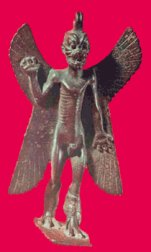 |
| References: | www.cold-me.net/temp/Pazuzu.gif |
![]()
![]()
| Enemy Name: | Persephone |
| Games In: | Castlevania: Aria of Sorrow, Castlevania: Dawn of Sorrow and Castlevania: Portrait of Ruin |
| Description: | "Persephone is the daughter of the Greek goddess Demeter. She was kidnapped by Hades and later became his wife. Her name translates to 'The one who creates destruction.' " |
| Picture(s): |
 |
| References: | www.uvm.edu/~classics/supplementary_slides/Persephone.jpg |
![]()
![]()
| Enemy Name: | Pike Master |
| Games In: | Castlevania: Harmony of Dissonance |
| Description: | "A pike is a pole-like weapon used by infantry to counter cavalry assaults. They could exceed some six meters in length. Since such a weapon is not useful in close combat, pikemen, in addition, often equipped a sword." |
| Picture(s): |
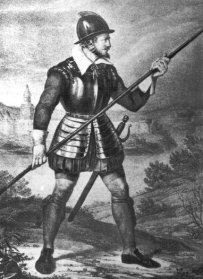 |
| References: | www.xenophongi.org/rushistory/medievalarmor/pikeman.jpg |
![]()
![]()
| Enemy Name: | Pixie |
| Games In: | Castlevania: Harmony of Dissonance |
| Description: | "Pixies are fairies that live in Scotland and Cornwall. They enjoy playing, dancing and music. They can be killed by excessive contact with iron." |
| Picture(s): |
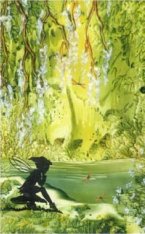 |
| References: | www.almostabstract.freeuk.com/Originals/OriginalsLL/Pall49.jpg |
![]()
![]()
| Enemy Name: | Poltergeist |
| Games In: | Castlevania: Symphony of the Night, Castlevania: Circle of the Moon and Castlevania: Dawn of Sorrow |
| Description: | "This term means, initially, 'noisy ghosts.' It is derived from the German 'poltern' ('to knock') and 'geist' ('spirit'). Poltergeists are paranormal activity that increases at night, wherein objects starts moving. Such activities start and stop abruptly, and they last over several hours to several months--rarely several years, in contrast to haunted houses, which can remain haunted for several centuries. Today, it is believed that poltergeists are not caused by spirits but, rather, they are psychical phenomenons created by humans who suffer from intense repressed anger, hostility and sexual tension. In most cases, the 'agent' is a child or teenager girl." |
![]()
![]()
| Enemy Name: | Procel |
| Games In: | Castlevania: Dawn of Sorrow |
| Description: | "He is a Great Duke of Hell who commands forty-eight legions of demons. He teaches geometry and all liberal sciences. He can make great noise--like the running of the water. He also warms waters and discovered the 'bath.' He is described as an angel who speaks mystically and darkly of hidden things." |
![]()
![]()
| Enemy Name: | Quezlcoatl |
| Games In: | Castlevania: Aria of Sorrow, Castlevania: Dawn of Sorrow and Castlevania: Portrait of Ruin |
| Description: | "Quetzalcoatl was the most famous of all gods in America. His name is composed of two separate words joined together: 'Quetzal' ('a bird') and 'coatl' ('snake'); he has been called 'the feathered serpent.' He is said to have been expelled by another god, whereby he was forced to sail a boat over the sea and to the east. In a case of myth-turned-reality: When explorer Cortez landed in the New World, natives thought him to be the very reincarnation of Quetzalcoatl. The Quetzal, in relation, is a beautiful but very endangered bird found in the mountain rain forests of Central America; this animal is the symbol of freedom and wealth for the Mayans, and it even appears on the Guatemalan flag." |
| Picture(s): |
  |
| References: | www.azteca.net/aztec/prehisp/quetzalc.html www.quetzal.net/Imagenes/quetzal5.jpg |
![]()
![]()
| Enemy Name: | Rahab |
| Games In: | Castlevania: Dawn of Sorrow |
| Description: | "For the picture and description of Rahab, you can read the description of the 'Rahab Sword' in the Arsenal Origins." |
![]()
![]()
| Enemy Name: | Ripper |
| Games In: | Castlevania: Aria of Sorrow, Castlevania: Dawn of Sorrow and Castlevania: Portrait of Ruin |
| Description: | "Jack the Ripper is a pseudonym given to an unidentified serial killer who serviced around London in 1888. All victims were casual prostitutes whose bodies were mutilated and some internal organs removed. Sometime after the first two murders, graffiti was found: 'The Juws are the men That Will not be Blamed for nothing.' The name 'Jack the Ripper' comes from a letter that was sent by someone claiming to be the murderer. Many suspects have been proposed, but none of them were by the experts found to be widely persuasive " |
| Picture(s): |
 |
| References: | www.sightseeingtours.co.uk/london/images/jacktheripper5.jpg |
![]()
![]()
![]()
![]()
| Enemy Name: | Saint Elmo |
| Games In: | Castlevania: Order of Ecclesia |
| Description: | "Saint Erasmus of Formiae, also known as Saint Elmo, is a Christian saint and martyr. He may have become the patron of sailors because it is said that he continued to preach even after a thunderbolt struck the ground beside him. For this reason, sailors who were potential victims of storms claimed his prayers. Also, the electrical discharges at the masthead of ships were interpreted as a sign of his protection and came to be called Saint Elmo's Fire. Saint Elmo's Fires are a bright blue or violet glow appearing around tall and sharply pointed structures: mast, lightning rod, chimney, aircraft wings, etc. They result of the ionization of the air molecules due to the electric field around the object in question." |
| Picture(s): |
|
| References: | acaptainslog.blogspot.com/ www.conservapedia.com/Saint_Erasmus |
![]()
![]()
![]()
![]()
| Enemy Name: | Salome |
| Games In: | Castlevania: Symphony of the Night |
| Description: | "There are actually three women called Salome: (1) Salomé, the daughter of Herodias; she asked her stepfather, Herod Antipas, to execute John the Baptist (as seen below). (2) A Jewish queen living from 139 B.C. to 67 B.C. And (3) a woman present during the Crucifixion; she was one of three women who had gone to Jesus' tomb to anoint the body with spices and witnessed that the stone had been rolled away." |
| Picture(s): |
 |
| References: | en.wikipedia.org/wiki/Image:Titian-salome.jpg |
![]()
![]()
| Enemy Name: | Sand Worm |
| Games In: | Castlevania: Portrait of Ruin |
| Description: | "This is clearly a tribute to Frank Herbert's science-fiction series Dune. Sandworms are giant creatures that live in the sands of the desert planet Arakis (Dune), and they reach up to lengths of 2778 meters. Inspired by his work, also, were the sandworms seen in the comedy film Beetlejuice; like Herbert's creations, they lurk on a distant desert planet--in this case Saturn." |
| Picture(s): |
|
| References: | www.arrakis-ttm.com/books/dune-illustrated.gif moviejpegs1.tripod.com/sitebuildercontent/sitebuilderfiles/Sand_Worm.jpg |
![]()
![]()
| Enemy Name: | Schmoo |
| Games In: | Castlevania: Symphony of the Night |
| Description: | Says guest contributor B. Busta: "Shmoo was originally a cartoon character as envisioned by cartoonist Al Capp. Wikipedia tells us that 'it was used to satirize political debates about the supposed loss of personal incentive due to the growth of the 'welfare state.' " |
| Picture(s): |
 |
| References: | en.wikipedia.org/wiki/Schmoo |
![]()
![]()
| Enemy Name: | Scylla |
| Games In: | Castlevania: Symphony of the Night |
| Description: | "Scylla is a Greek monster with six heads which. Together with Charybde, they guarded what is now the Strait of Messina." |
| Picture(s): |
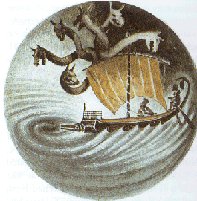 |
| References: | webhome.idirect.com/~donlong/monsters/Html/Scylla.htm |
![]()
![]()
![]()
![]()
| Enemy Name: | Simon Wraith |
| Games In: | Castlevania: Harmony of Dissonance |
| Description: | "The skeletons that bear a resemblance to Simon Belmont represent another episode in Dracula's psychological war against the Belmonts. (See also Fake Heroes and Wraith.)" |
| Picture(s): |
 |
![]()
![]()
| Enemy Name: | Siren |
| Games In: | Castlevania: Circle of the Moon, Castlevania: Harmony of Dissonance and Castlevania: Aria of Sorrow |
| Description: | "Sirens were half-bird, half-woman creatures (as seen below and to the left) that lived on an island called Anthemoessa, which was situated in the sea between Sicily and Italy. The enchanting songs of the siren would cause sailors forget their sense of direction and crash into the rocks surrounding the island. Since the middle ages, sirens have been as portrayed half-fish, half-woman (below and to the right); though this variety could still be a presage of misfortune, they are sometimes kind in nature." |
| Picture(s): |
  |
| References: | emp.byui.edu/davisr/humpix/Siren.JPG www.monolithgraphics.com/images/2005/siren.gif |





